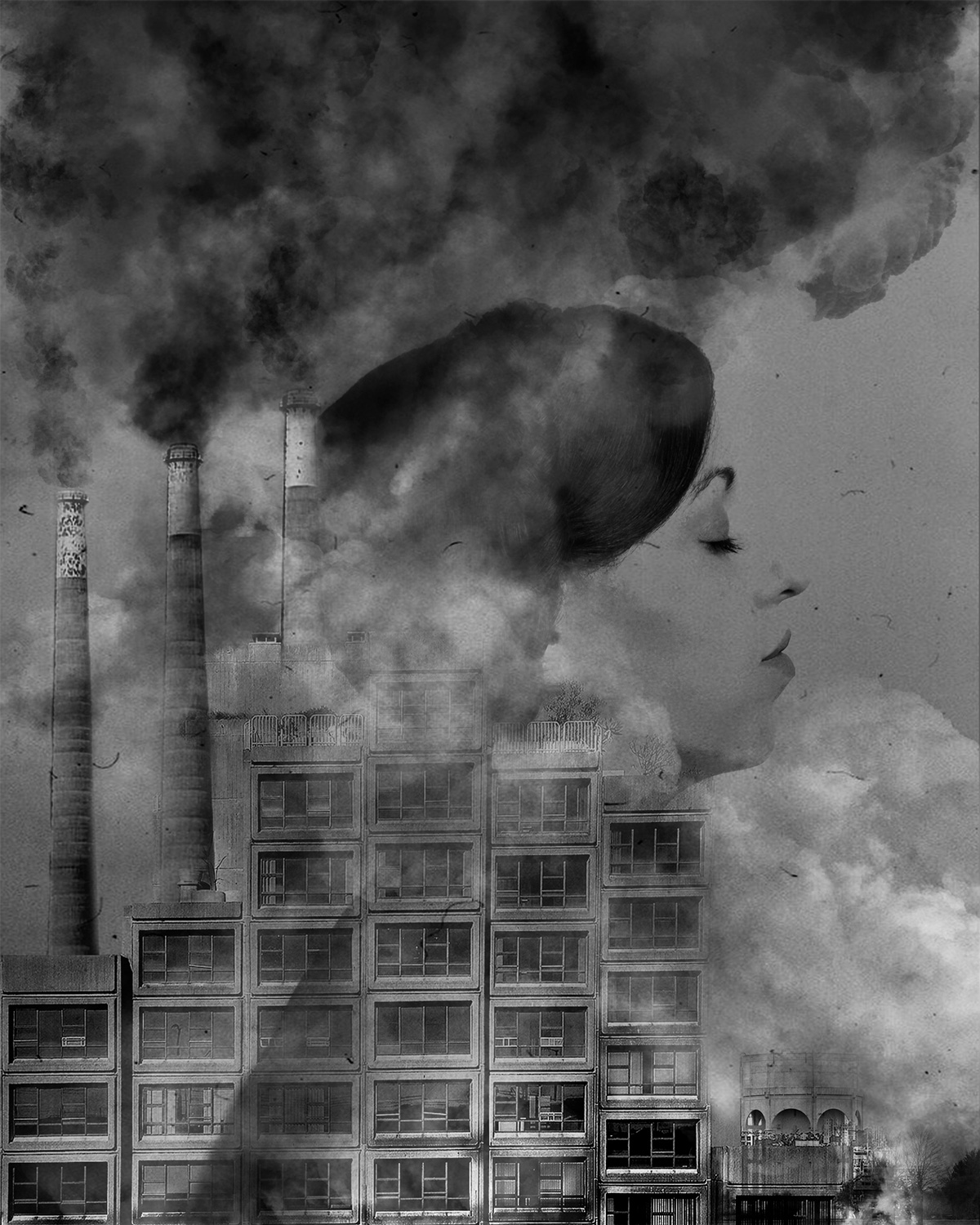5.09 Isolation
Miriam Blaylock

Before receiving the piece from the previous participant, I was researching on cement. I found some interesting data, such as the millions of tons of cement that are manufactured each year, its uses, the largest building, and I think that old building of cement, the Roman Pantheon.
A curious fact that caught my attention is that in my language, Spanish, the word “cement”, and the word “foundation” have the same Latin root. It made me think, metaphorically, that cement is the basis on which our life is based, our society.
When I received the piece that I had to translate, the first thing I discovered was the concept of CONNECTION and I started to put all these pieces together towards a single path.
Cement builds; with it we create highways, roads and bridges that connect us to the world. Cement unites us, brings us together in floors and floors of buildings in neighborhoods full of pavements, walls, and endless cement facades. With cement we have modified our way of living and being in the world.
But, is this connection real? Could it be that we live more and more isolated, locked in a shell designed for us, that distances us more and more from true social cohesion? In the same way that we observe the world through our mobile screens, but without living that scene, perhaps we are in the world in our small apartment, but we are not connected with what is out there.
So that is what I have tried to capture in this piece, this duality that almost anything that exists in the world has.
—Miriam Blaylock
Antes de recibir la pieza del anterior participante estuve investigando sobre el cemento. Encontré algunos datos interesantes, como los millones de toneladas de cemento que se fabrican cada año, sus usos, el edificio mas grande, y creo que antiguo, construido de cemento, el Panteón Romano.
Un dato curioso que llamó mi atención es que en mi lengua, el español, la palabra cemento, y la palabra cimiento tiene la misma raíz latina, me hizo pensar, en sentido metafórico que el cemento es de alguna manera la base sobre la que se asienta nuestra vida, nuestra sociedad.
Cuando recibí la pieza que debía traducir, lo primero que me transmitió fue el concepto de conexión y empecé a unir todas estas piezas hacía un único camino.
El cemento construye, con él creamos carreteras, caminos y puentes que nos conectan con el mundo. El cemento no une, nos aglutina en plantas y plantas de edificios en barrios abarrotados de pavimentos, de muros, de fachadas interminables de cemento. Con el cemento hemos modificado nuestra manera de vivir y convivir con el mundo.
Pero, ¿esta conexión es real? ¿Puede ser que vivamos cada vez más aislados encerrados en una coraza diseñada a nuestra medida, que nos distancia cada vez más de la verdadera cohesión social? De la misma manera que observamos el mundo a través de nuestras pantallas móviles, pero sin vivir esa escena, quizá estamos en el mundo en nuestro pequeño apartamento, pero no estamos conectados con lo que hay ahí fuera.
Así que eso es lo que he tratado de plasmar en la pieza que he creado, esta dualidad que tiene casi cualquier cosa que existe en el mundo.
—Miriam Blaylock
+Bio
Miriam Blaylock is a retired art historian, graphic designer and photographer by vocation, but above all, she is a tireless explorer of creativity.
Miriam Blaylock es una historiadora del arte retirada, diseñadora gráfica y fotógrafa de vocación, pero sobre todo es una exploradora incansable de la creatividad.
Website